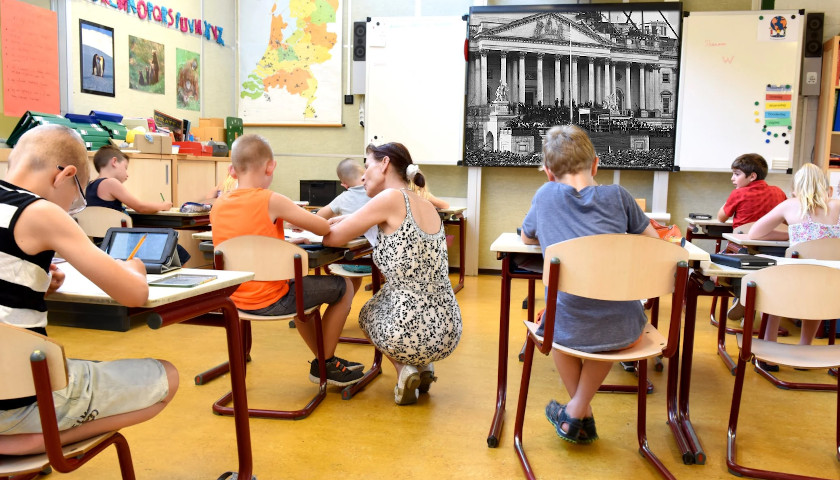by Jamie Gass
At its founding, American K-12 public education was meant to prepare young people to be active participants in our democratic republic. That should still be its highest purpose, especially when it comes to teaching civics.
Historically, public schools held fast to the principle that effective education must be non-partisan. Knowing they had great power to influence young minds, teachers used to be careful to choose content and pedagogies that restricted their ability to impose their personal political views on schoolchildren.
Today, maintaining non-partisanship is more important than ever in classrooms. Sadly, it’s increasingly dishonored. Civics has become a hot-button issue of late, particularly after remote learning allowed more parents to see what their children were actually being taught. Many were not happy with what they saw, and the debate over civics education is symptomatic of the larger divide that has become such a looming threat to American society.
A recent analysis of 15 leading high school civics programs published by Pioneer Institute and the National Association of Scholars (NAS) finds that too many of them push political dogmas masquerading as civics and history.
Take “action civics,” an approach defined as vocational training in political organizing. It allows students to get credit for working for politically progressive organizations during school hours. Anyone who has witnessed the decades-long decline in civics scores on the National Assessment of Educational Process knows that students need more – not less – classroom time devoted to basic civic knowledge, not lessons in politicking.
Instead of keeping teachers’ personal views out of the classroom, action civics facilitates the ability to impose their views by influencing the process by which students choose their “community partners.” Rather than supporting civil society, this counterfeit civics is designed to change the entire political system.
Too often the result of curricula like action civics is to elevate group identity over students’ role as self-governing citizens in a republic, united by their common identity as Americans. It’s an approach that seeks to replace equal opportunity – and the critical incentive to pursue excellence that it provides – with equity, which attempts to ensure equal outcomes for each identity group.
The change echoes the larger elevation of equity over excellence in American public education, despite research showing that prioritizing excellence promotes equal opportunity, which should be the goal.
The de-emphasis of excellence can be seen in the 15 curricula Pioneer and NAS reviewed. Hillsdale College’s 1776 Curriculum; We the People: Citizen and the Constitution; and Gilder Lehrman Institute of American History, all provide lesson plans aimed for academically serious, curious 12th-grade students.
Rather than seeking to raise a generation of political activists and community organizers, civics programs should instill an informed love of our country based on the nation’s founding, how our system of government works, and what Americans have achieved – together with our many failings – since the nation was created.
Radical activists on the left and right must not hold sway over how civics is taught in American public schools. Instead, we should reassert the principle of strict non-partisanship and emphasize academic rigor and excellence as we prepare students to actively participate in democracy as self-governing members of this American republic.
– – –
Jamie Gass is Director of School Reform at Pioneer Institute, and David Randall is Director of Research at the National Association of Scholars. Randall is the author of a new report jointly published by the two organizations, “Learning for Self-Government: A K-12 Civics Report Card.”






Just a reminder. “K” was not a part of the original public education program. It became more and more popular as more and more moms joined the workforce. A nice form of free babysitting.